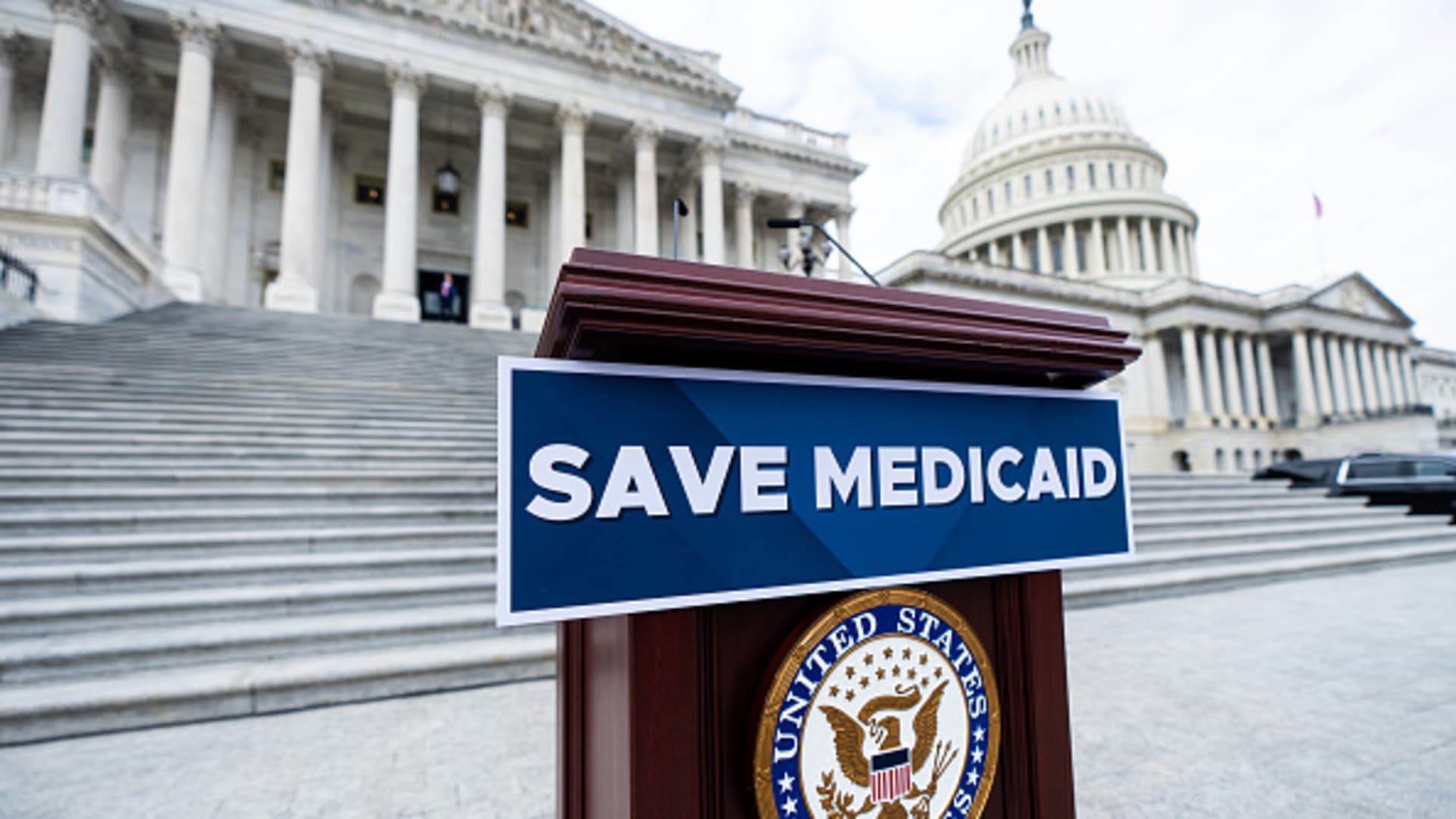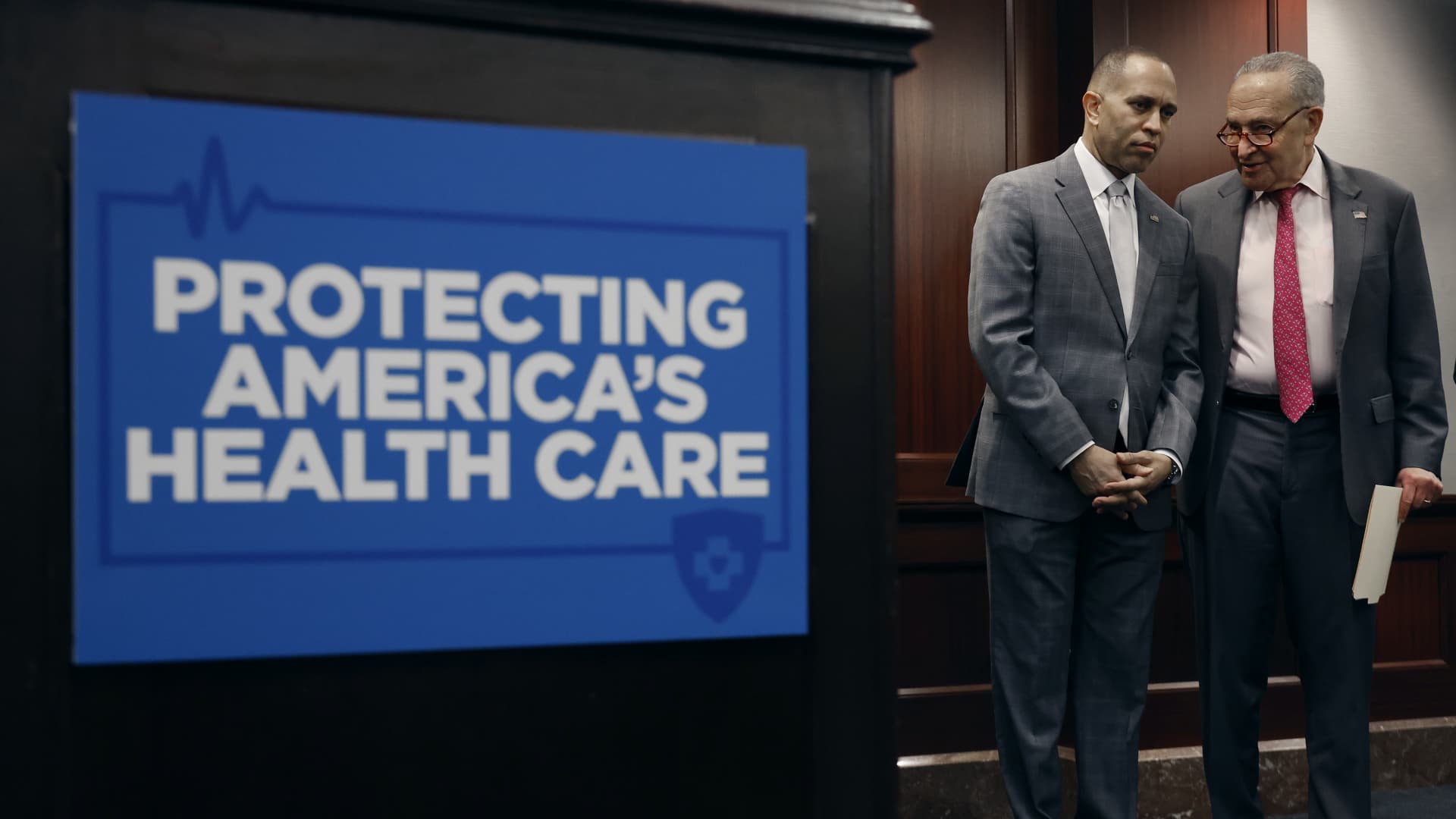Damircudic | E+ | Getty Images
Women have been making significant strides in their education and careers and working as much, if not more, than their male counterparts.
Today, women who are just starting out, between the ages of 20-24, account for about 50% of total employment, which means that young women are just as likely to work as young men, according to a recent analysis of Federal Reserve economic data.
That is at least until they reach an age when they often get married or have children, the Fed researchers found — a dynamic that has proved remarkably stubborn.
“The trend was inevitable,” said Teresa Ghilarducci, professor of economics at The New School for Social Research in New York.
Women have achieved parity in the workplace, “but not full equality,” she said.
‘I cry a lot but I am so productive, it’s an art’
From Taylor Swift song lyrics to viral TikTok trends, there’s a point in pop culture that is made clear: The daily grind has taken a toll on women.
A line from the song “I Can Do It With a Broken Heart” off of Swift’s latest album, “The Tortured Poets Department,” hit home with her mostly female listeners: “I cry a lot, but I am so productive, it’s an art.”
More than 180,000 short-form video posts on TikTok featured the lyric.
More from Personal Finance:
‘I cry a lot but I am so productive, it’s an art’
Here’s what ‘recession pop’ is
‘NEETs’: Why some young adults are disconnected from the job market
“It resonates with both millennials and Gen Zers, which I think indicates that Gen Z is feeling the same ‘girl-boss’ pressures that millennials famously grew up with,” Casey Lewis, a social media trend forecaster and author of newsletter After School, told CNBC in April.
“There’s a lot of pressure on young women,” Lewis said.
Another song also struck a chord this year: “I’m looking for a man in finance, trust fund, 6’5″, blue eyes…” Megan Boni first posted the song on a clip from her TikTok account @girl_on_couch on April 30. Her 20-second video has more than 58.4 million views and counting.
While it was originally intended as a fun take on single women with high expectations for who they date, “there are a lot of single women who are looking but not finding what they want,” according to Lewis.
That also helps explain why some women are opting out of the workforce entirely in favor of being a so-called “tradwife,” another one of 2024’s viral social media trends depicting women adhering to very traditional gender roles and embracing domesticity.
Young women, whether they’re married or not, are expressing a desire to “take a step out of the professional rat race,” Lewis previously said. Being a tradwife is “an excuse to step back and do less.”
But women are not doing less by any standard — nor were they back then.
Although women are more likely than men to take time out of the labor force or reduce the number of hours worked because of caretaking responsibilities, whether working or not, they still pick up a heavier load at home, according to a separate Pew Research Center survey.
“The lack of affordable childcare may be playing a role,” according to Richard Fry, a senior researcher at Pew.
“The childcare crisis, which was simmering prior to the pandemic, has come to a boil,” according to a KPMG analysis. Between 1991 and 2024, the costs for child care rose at nearly twice the pace of overall inflation.
Where are the men?
Meanwhile, men are steadily dropping out of the workforce, especially those between the ages 25 to 54, which are considered their prime working years.
A study by the Pew Research Center found that men who are not college-educated leave the workforce at higher rates than men who are. At the same time, fewer younger men have been enrolling in college over the past decade.
Often referred to as NEETs — neither in employment, education or in training — this cohort has been hardest hit by globalization and the decline of manufacturing in this country, according to Pew’s Fry.
“When you don’t get rewarded for working, you work less,” Fry said. “That is a basic tenet of labor economics.”
Last summer’s blockbuster “Barbie” movie captured that well, other economists say, “describing Ken as a young man in America who just has no place and no role,” according to Julia Pollak, chief economist at ZipRecruiter.
Still, overall, men continue to outpace women by other measures.
Real median earnings for men who worked full-time, year-round increased by 3%. Meanwhile, real median earnings increased 1.5% for women who worked full-time, year-round, the Census Bureau found.
At the same time, 37% of women said they feel like they have to prioritize their partner’s career over their own — up slightly from 2023, according to Deloitte’s most recent Women at Work report, in part because their partner earns more but also due to societal or cultural expectations.


 Personal Finance1 week ago
Personal Finance1 week ago
 Economics1 week ago
Economics1 week ago
 Economics1 week ago
Economics1 week ago
 Economics1 week ago
Economics1 week ago
 Economics1 week ago
Economics1 week ago
 Blog Post7 days ago
Blog Post7 days ago
 Economics1 week ago
Economics1 week ago
 Economics6 days ago
Economics6 days ago













